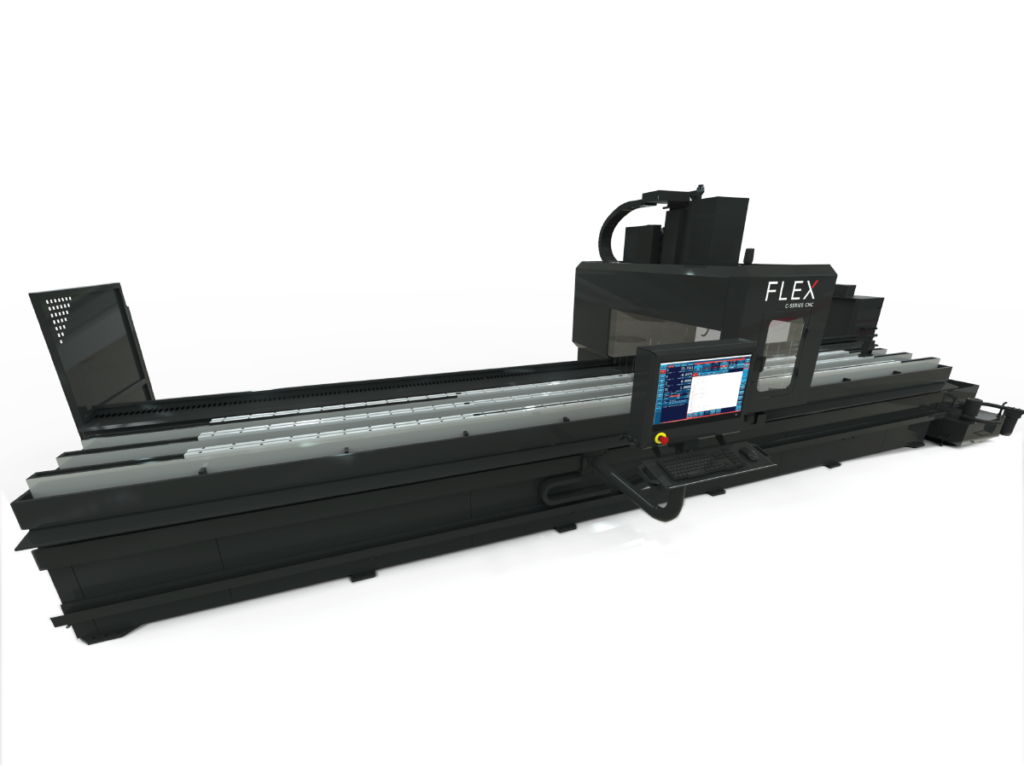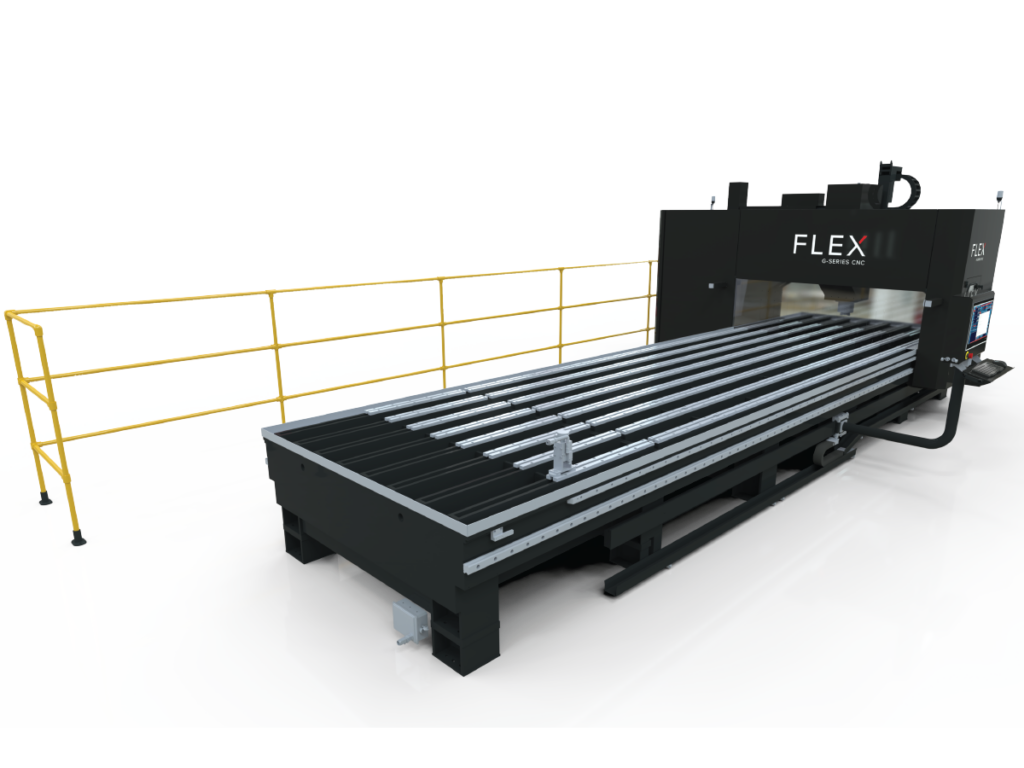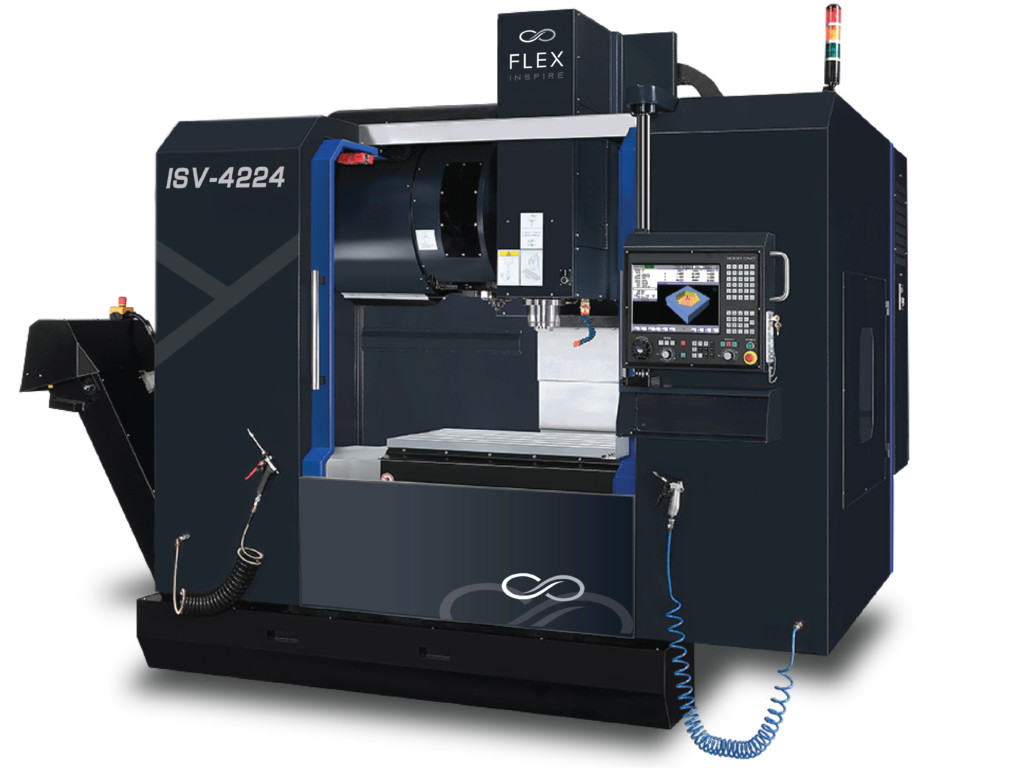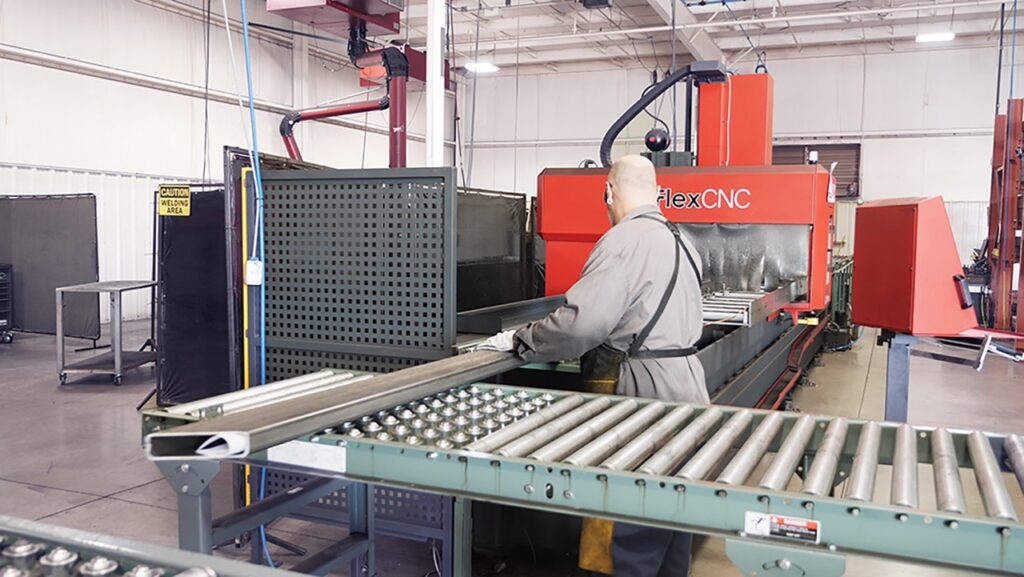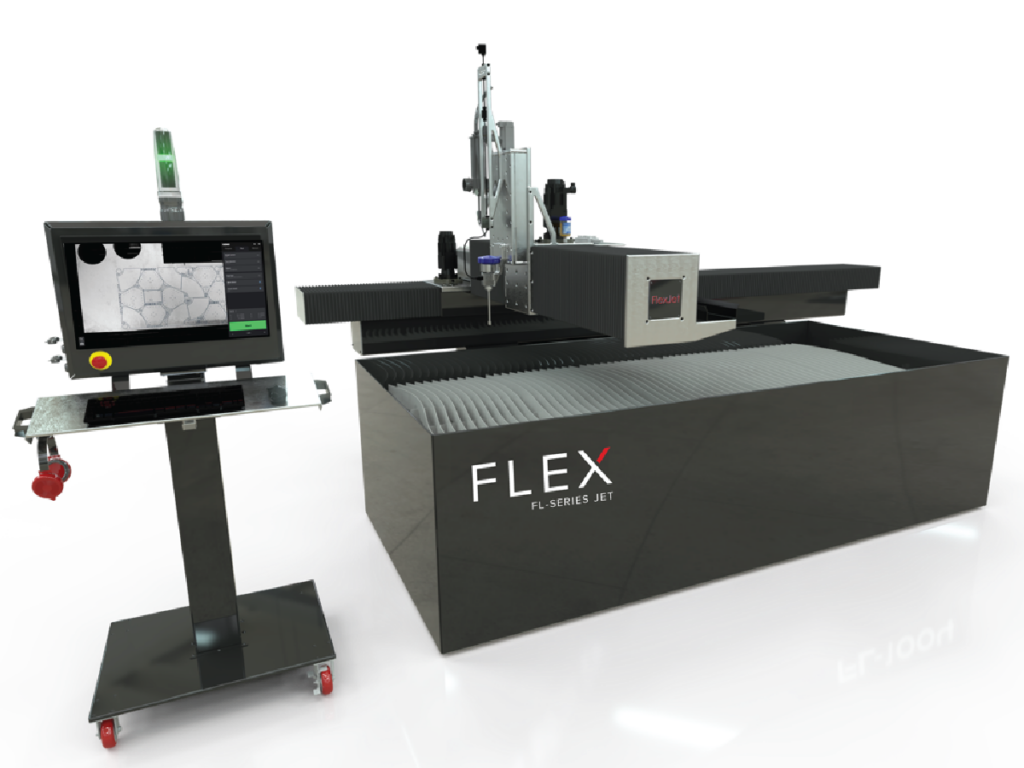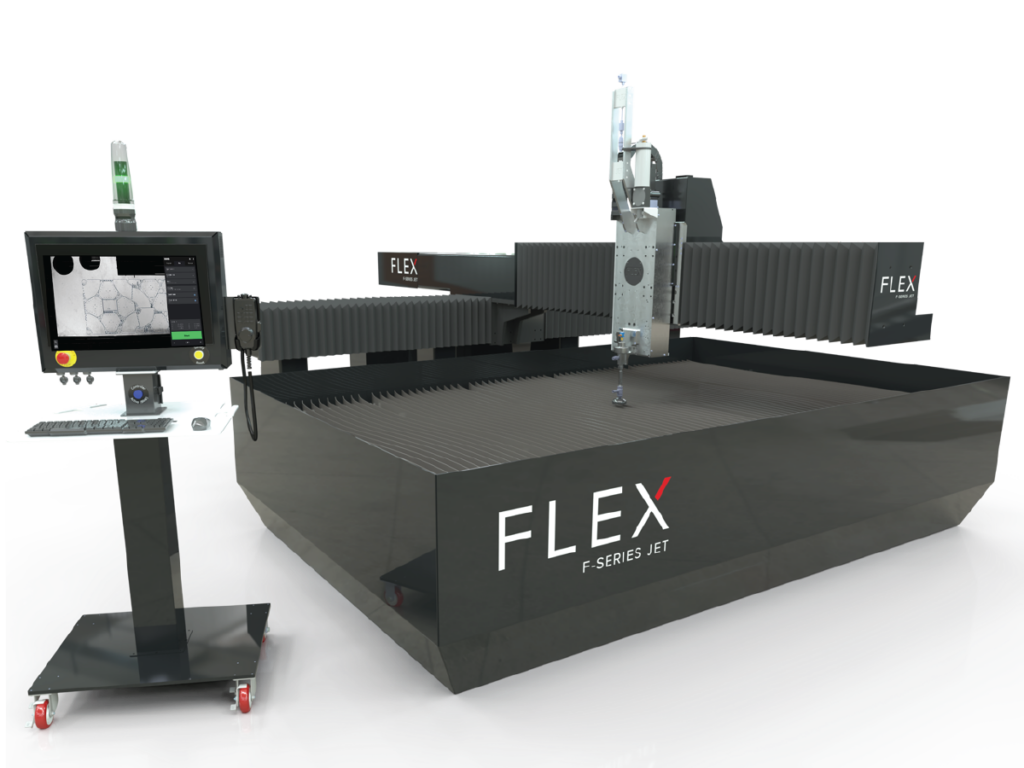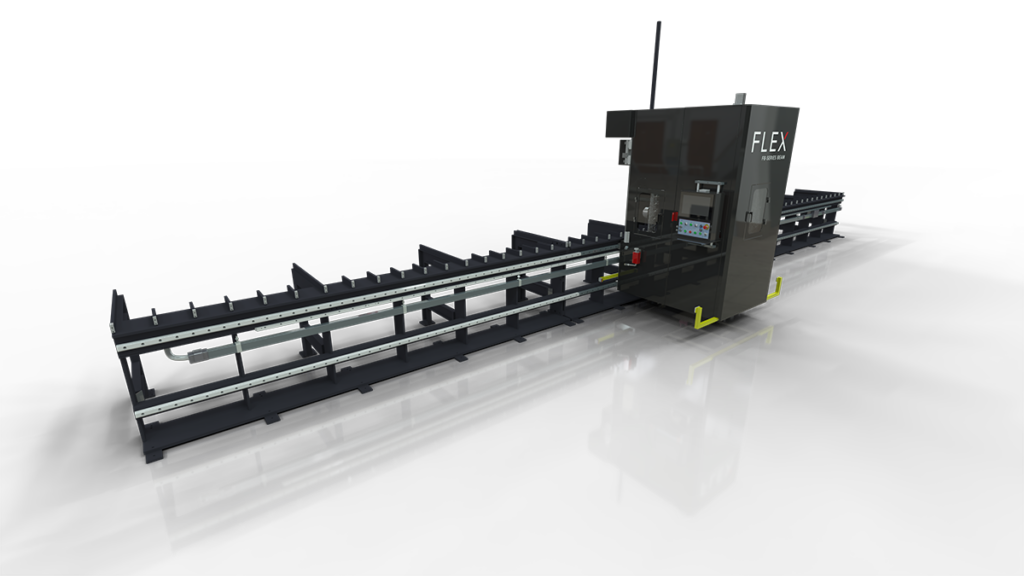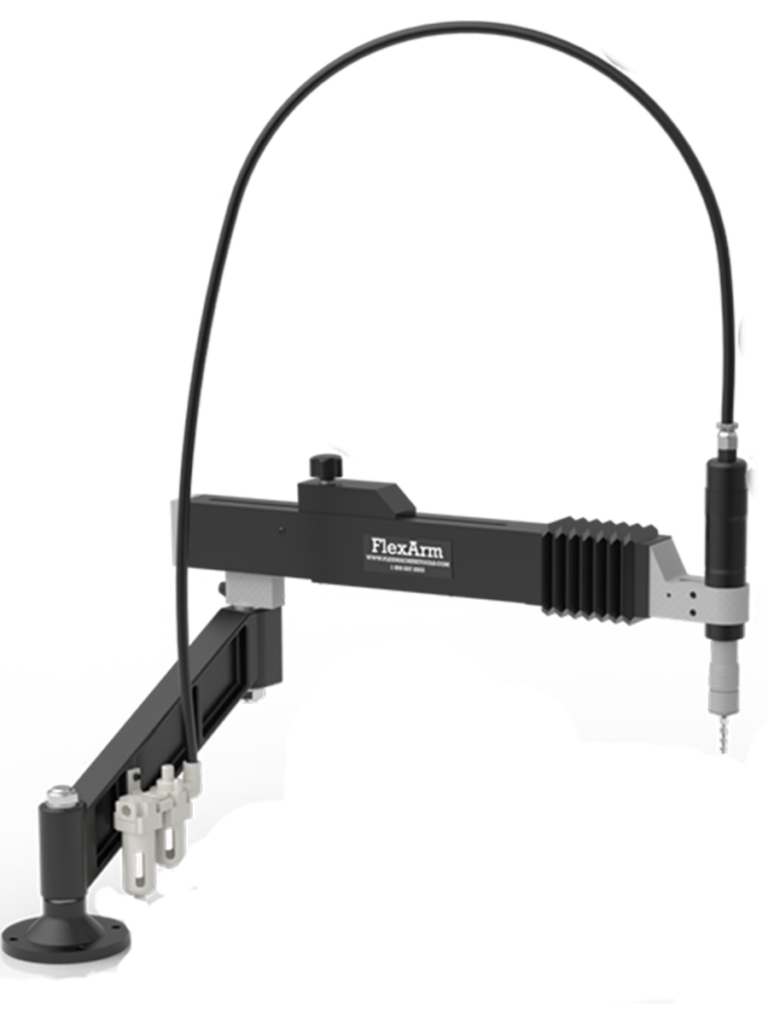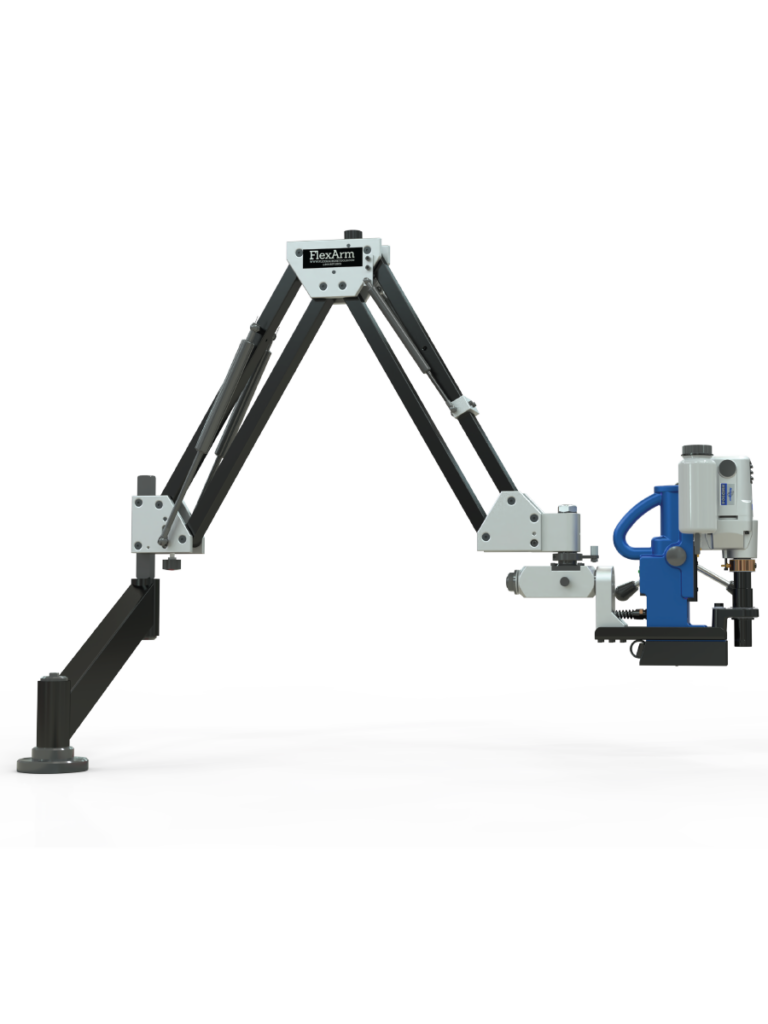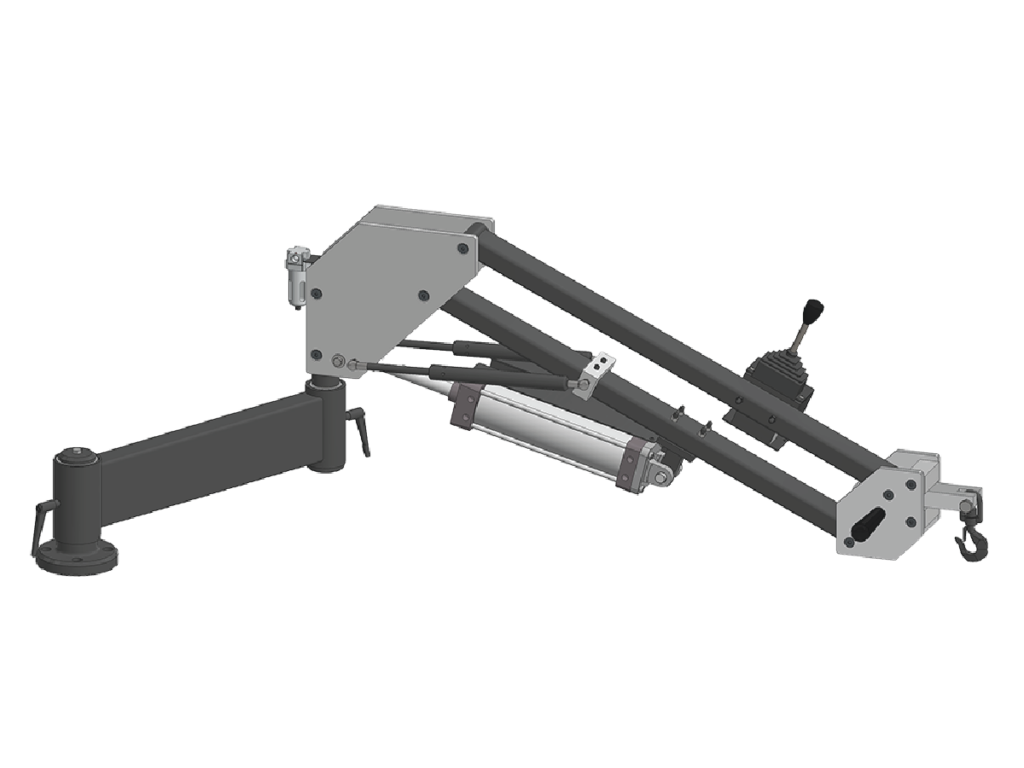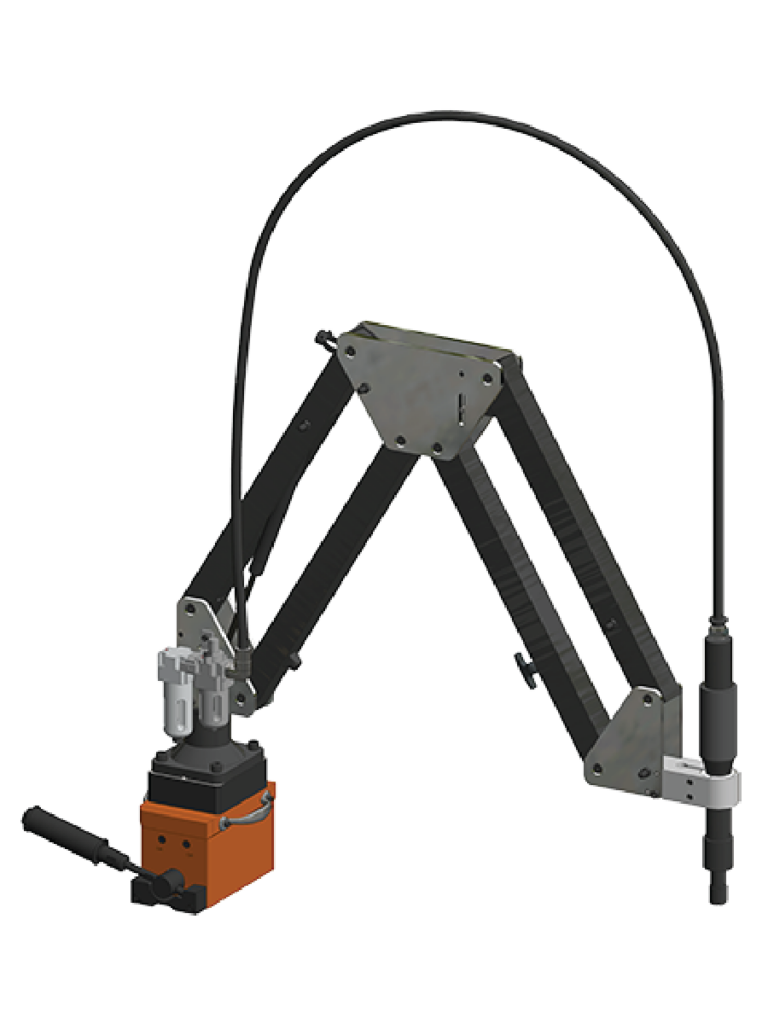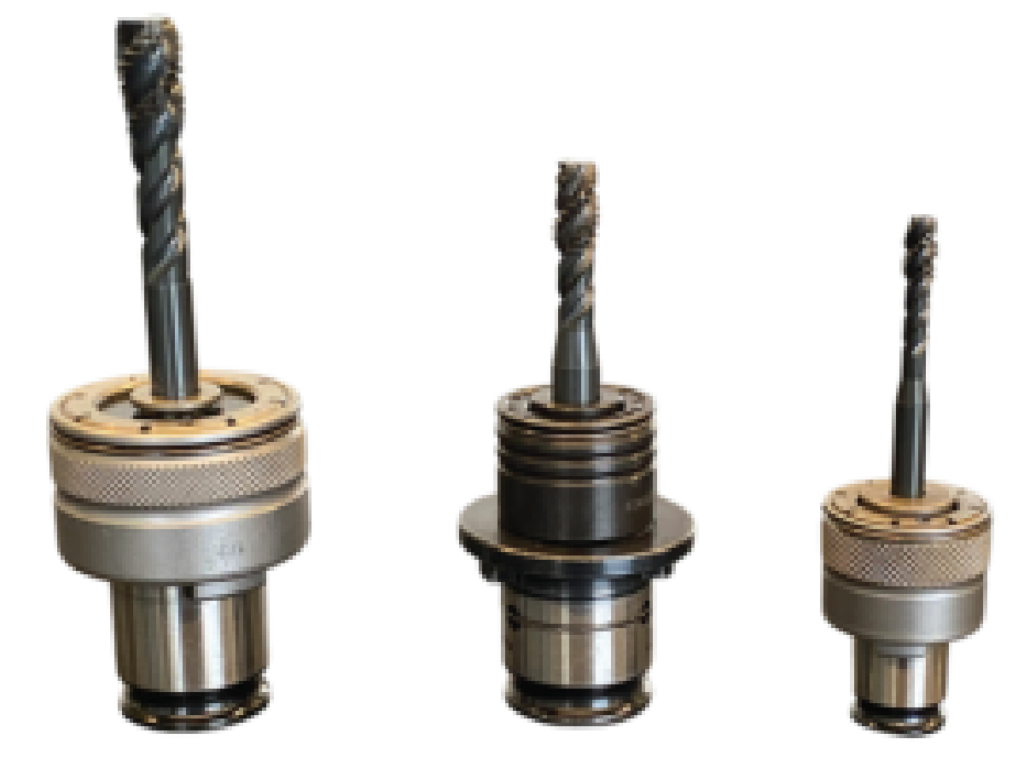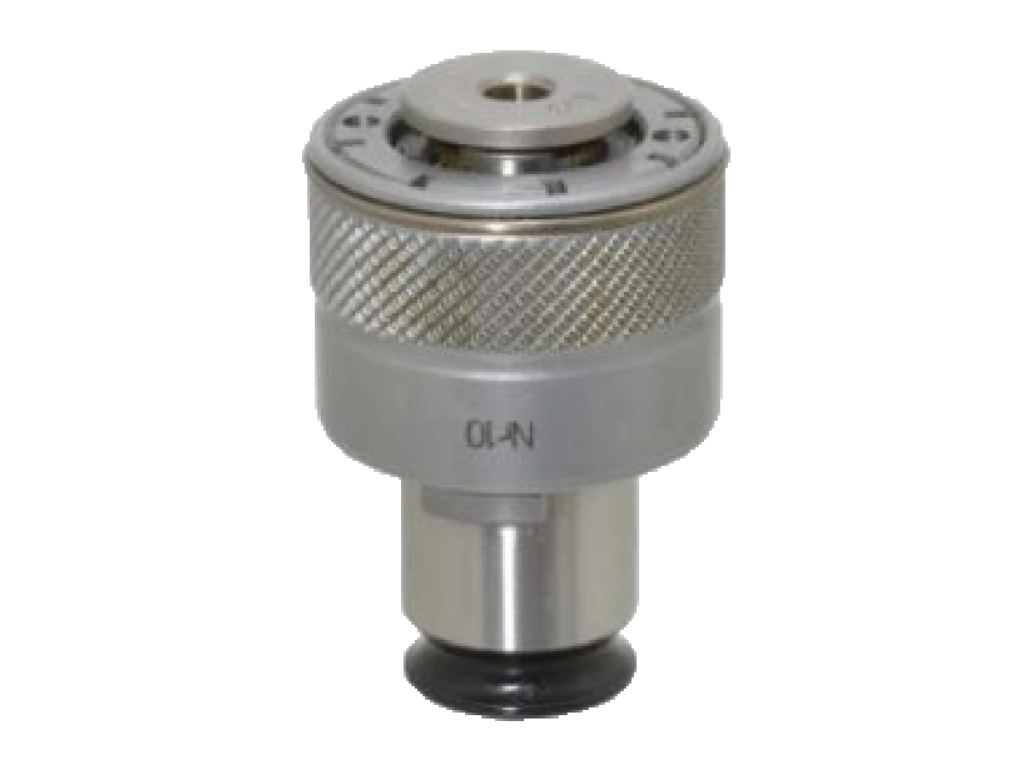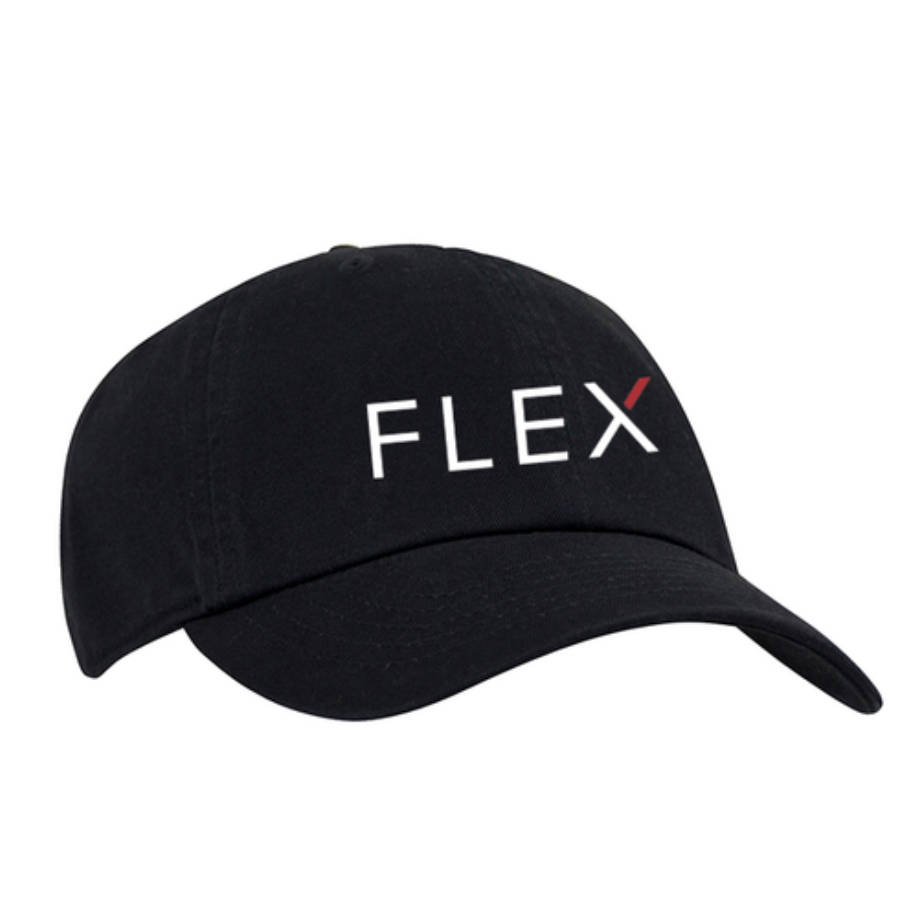Waterjet or laser? Many modern manufacturers are facing unique challenges, including maintaining flexibility while keeping costs low. The waterjet and the laser are both capable of cutting a variety of materials at high speeds. The choice of which one is more accurate, faster, and better for production is determined by each individual’s needs and what will bring value to your specific application.
HOW DOES A WATERJET WORK?
The FlexJet waterjet uses high-pressure water-focused in a minimal point to cut the material in a subtractive manufacturing process. The pressure can be as high as 90,000 pounds per square inch. The water mixes with an abrasive such as garnet, which increases its cutting possibilities. The FlexJet waterjet is also able to achieve taperless cutting in challenging to reach areas.
Waterjets cut a variety of materials by employing a cool-cutting process that leaves no heat-affected zones. The elimination of using heat means the process can go straight from the waterjet to threading or welding operations without the need to remove any heat-affected material. Which ultimately cuts down on labor and provides a quality product with speed and efficiency. The clean-cut of a waterjet also eliminates the need for grinding or sanding. Lasers and other tools struggle to cut materials with high thermal conductivity (like steel or aluminum) effectively. On the other hand, waterjet machines eradicate any heat-affected zones, leading to microscopic cracks or structural weakness in components.
HOW DOES LASER CUTTING WORK?
Cutting with a laser uses a beam by making contact with the material surface. The laser heats it so strongly that it melts or completely vaporizes the material, causing it to separate. Once the laser beam has penetrated the material at one point, the actual cutting process begins. The laser beam path follows the selected geometry or cutting lines and separates the material in the process. A laser cutting machine can also engrave as well as cut using a laser. It will engrave and cut various materials such as plastics, wood, paper, food, fabric, foam, and metal foils up to 0.5 mm.
IN CONCLUSION
Is FlexJet the best option for every application? It depends on your goals and what material you are machining. When it comes to price, flexibility, and versatility, you can’t beat what the FlexJet waterjet offers. If you’re looking for a versatile cutting machine that will save you time and money, contact us or give us a call at 800-837-2503 for more information on the FlexJet waterjet.

